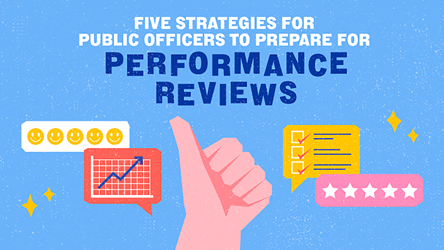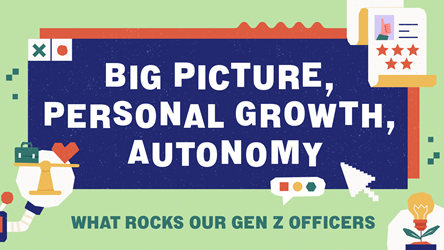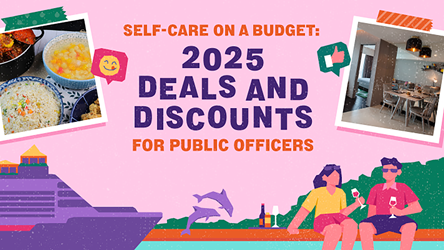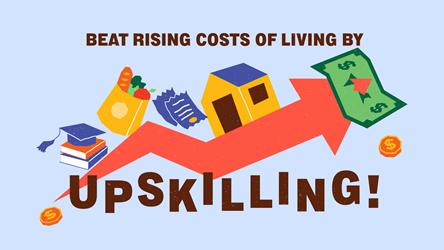Balancing Act: Rethinking Roles For Better Results

In 2012, Singapore celebrated World Water Day with 15 events across the island, all run by the PUB, the national water agency. In the following year, the number of events dropped to 11, and by 2014, there were just five big events.
But this year, the number of events for World Water Day jumped to 350. The celebrations, which ran for a month, also attracted 400,000 – a record turnout.
This achievement was largely due to a new approach in organising the celebrations, says Mr George Madhavan, Director, 3P Network at the PUB. Instead of just inviting its partners to attend the events on one day, the PUB asked grassroots organisations, schools, non-governmental organisations, companies and public agencies to organise events on their own in March with the PUB’s support.
“By taking a step back, we’re allowing the community and society to take a step forward,” he says.
In taking that “step back”, Mr Madhavan was applying what he had learnt from a Civil Service College (CSC) workshop that he attended in 2013. Known as the New Synthesis (NS) Lab, the workshop introduced a framework that guides public administrators like Mr Madhavan in reframing issues and resources within a broader context, identifying other parties that they can work with, and exploring how best they can be engaged.
Challenging the conventional
The workshops are led by Ms Jocelyne Bourgon, CSC Senior Visiting Fellow, who developed the NS framework. She has facilitated workshops in Singapore and around the world for public officers to apply the framework to real-life issues.
Over her years in the Canadian public service, Ms Bourgon observed a growing gap between “conventional ideas about public administration and the reality faced by practitioners”.
Conventional ideas are thinking that “government can do it all” or do things best, or being content with what has worked so far. But the reality is, relationships between governments and citizens are changing. Citizens today want a bigger say in policy matters, and contribute to shaping issues and public policy challenges.
To bridge this gap, Ms Bourgon drew from public administration practices, academic disciplines, past civil service reforms and the “reality of practice” to create the NS framework.
The framework is made up of four “lenses”: positioning, leveraging, engaging and synthesising.
Positioning is reframing an organisation’s purpose, issues and contributions within a wider context of societal results. An example is when a transport group moves from thinking of its role as just building roads to connecting people and places. “The possibilities open up,” explains Ms Bourgon. “Do I celebrate more miles of asphalt or better connectivity?”
In the case of the PUB, it repositioned itself as a facilitator of World Water Day events, rather than the sole organiser.
Leveraging recognises that the state has a lot of authority but there is a limit to what it can do. A wise government uses that authority to lever the collective capacity of society.
Engaging others is necessary because whatever the government does creates some dependency among citizens, and may erode the “natural resilience of people, community and families”, says Ms Bourgon.
NS Lab participant Mr Lim Wee Sen, from the Land Transport Authority’s Community Partnership Division, offers this example: His team works with Neighbourhood Committees for private estate roads. Together, they encourage and provide options for residents to resolve parking issues amicably on their own, instead of reporting every matter to authorities.
Synthesis is “putting all the lenses together”, says Ms Bourgon, to constantly reframe roles, issues, and capabilities to achieve better results for society, not just for the organisation.
Engaging well
During the NS Lab workshops, participants shared several real issues their agencies face, and discussed how to apply the four “lenses” to them.
Something that resonated with Mr Madhavan was the reminder that engaging people means getting them to commit their time and effort.
“Once they find that you’re not sincere and just going through the motions, it creates a lot of mistrust in the system,” he says. “So we become very selective and purposeful when doing engagement.”
For example, the specialised topic of flood alleviation calls for an expert panel. “But if it’s about how we can better communicate with the public, alerting them to potential flooding, then we can consult a wider audience.”
The PUB also engages the community for their Active, Beautiful and Clean waterway projects, which are sited in the heartlands.
“We engage them early, before the design is cooked. Whatever requests they have, it’s easier to incorporate,” says Mr Madhavan. If an area has many schools, the PUB might look at adding many learning features. For older folk, it might be plots of land for community gardening.
“When the members of the community see that their ideas are incorporated... there’s a better sense of ownership... and they will take better care of it.”
Similarly, by roping in its partners for World Water Day, the PUB got “a much better outcome with fewer resources, and also built ownership, trust, resilience and sustainability in doing events,” he says.
Tying it all together
On synthesising, “the magic is in how you bring it all together... to rise above your agency’s results or KPIs, and focus on societal results,” says Ms Bourgon.
Doing this takes constant rethinking at all individual, organisational and institutional levels. She cites Our Singapore Conversation as a significant step in having a broad conversation about the balance that will best serve the country going forward.
But there is no “recipe” for doing this, she adds, as it then becomes another convention. Instead, she advises reflecting as and when needed to avoid being content with what works today.
“It’s the constant search for balance that ensures that you can continue to evolve,” says Ms Bourgon. “It comes with practice.”
After serving 21 years in the Canada Public Service in various departments, Ms Jocelyne Bourgon was appointed Secretary to the Cabinet in 1994 and Clerk of the Privy Council, Canada's highest ranking civil servant. She is President of Public Governance International, President Emeritus of the Canada School of Public Service and serves as special advisor to Canada's Privy Council Office. She leads the New Synthesis Project.
- POSTED ON
Jul 1, 2015
- TEXT BY
Siti Maziah Masramli
-
Work Better
Beat Rising Costs Of Living By Upskilling!









